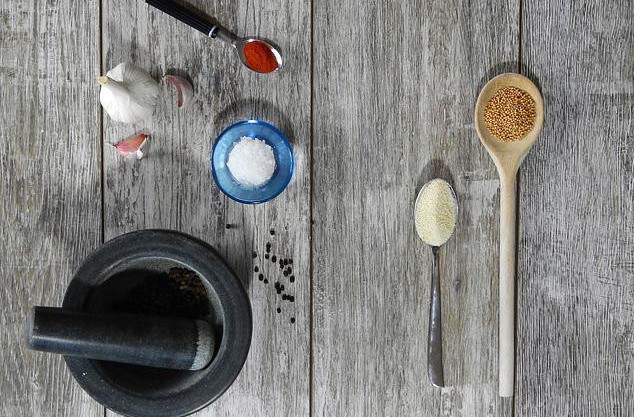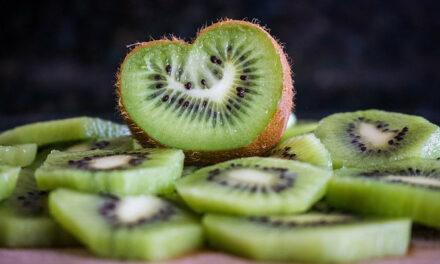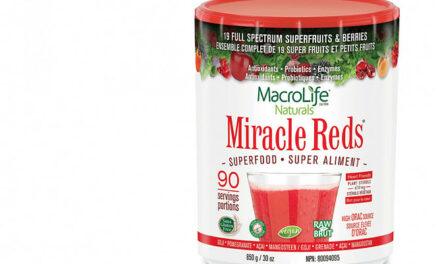Here we dig into Garlic Salt, specifically the relationship between Garlic Salt and Diabetes. Is Garlic Salt Good for Diabetics? is one of the many questions we will be addressing in this article.
Let’s start rolling…
The inclusion of garlic in an everyday diet can do beautiful things for your health. From reducing cholesterol to lowering blood sugar, eating adequate amounts of garlic daily can significantly improve your quality of life. But, when it comes to Garlic Salt, the story can be a bit different, especially if you are with diabetes or high blood pressure.
Find out more about garlic salt and its relation to diabetes in this article!
Before anything, let’s find out what really Garlic Salt is…
What is Garlic Salt?
Garlic salt is a versatile mix of dried, ground garlic and table salt with an anti-caking agent added. It can substitute for fresh garlic and salt that can add extra flavour to your cooking.
However, it’s essential to understand that it is still basically salt, so understanding how the properties of garlic salt affect the body and diabetes is vital for good health.
Garlic salt is nothing fancy but a combination of garlic powder and table salt. It can add a special touch to your favorite dishes, but can it be good for your diabetes health?
That’s exactly what you are going to learn about here. For example, the benefits of garlic salt for diabetes.
What is Garlic Powder, though?
Garlic powder is also a key ingredient in seasoned salt and spice mixes. You can use it to season meats, vegetables, and fish. Garlic powder can be used to make garlic bread.
It has a different taste from fresh garlic. It is most often used for dishes like pizza and sauce, where the taste of fresh garlic would be undesirable, but the flavor of garlic powder would not penetrate the food as well as fresh garlic does.
In comparison, the flavour of garlic salt lasts longer than that of fresh garlic and garlic powder; it will not go rancid as fresh garlic does.
When raw, this particular species has a highly pungent ‘bite’ that mellows significantly upon cooking.
However, the flavour of garlic salt varies in intensity and aroma with the different cooking methods.
The flavour of garlic salt is better understood once we dig into it to understand what is in it.
What’s in Garlic Salt?
Garlic salt contains about the same amount of sodium per volume as table salt, about 2,300 milligrams per teaspoon. However, the actual volume of garlic salt is less than that of table salt because the particles are larger.
A 1/4 teaspoon of table salt weighs about 4 grams, while the same amount of garlic salt weighs only 2 grams due to its larger particle size.
This makes it easy to adjust recipes that call for garlic powder by using smaller amounts of garlic salt and adding more pink salt, sea salt or kosher salt
to make up the difference in volume.
The anti-caking agent keeps the garlic from clumping together and sticking to the salt shaker while providing a smooth, free-flowing blend.
Most garlic salts contain added preservatives like citric acid, sodium bisulfate, or calcium silicate to improve shelf life.
The most common brand of garlic salt is McCormick Garlic Salt.
But, what is McCormick Garlic Salt?
It is a mixture of granulated garlic and table salt with an anti-caking agent. It is used as a seasoning and can be found in most supermarkets in the United States. It can be used in place of salt in many dishes or combined with herbs and spices to create a variety of spice blends.
Let’s explore the nutritional content of Garlic Salt…
What’s In Garlic Salt – The Nutritional Content
Following is the percentage of nutritional content in servings per tsp and 100g of garlic salt.


Garlic Powder vs Garlic Salt – What’s The Difference?
As noted earlier, garlic salt is a mixture of dried garlic (powder) and salt.
Chefs often find that when they need garlic and salt, which is usually an essential ingredient in most recipes, using garlic salt instead of the two ingredients separately helps them save time on seasoning.
On the other hand, garlic powder is purely made out of dried garlic cloves. It can be used as an alternative to natural garlic when you need the flavour without chunks or pieces. Both of these two ingredients can be found in most culinary explorations, and I’ve even seen many cooks sprinkle them over their popcorn.
Garlic has become an indispensable ingredient in many dishes, and most of those fond of cooking own a jar of either garlic powder or garlic salt.
Both products have entirely different effects on the taste of a dish, buttoning down their unique flavours, so you’ll need to determine what result you want before dumping either of them into your food. It’s not uncommon that one spice is substituted with the other, which can sometimes result in unpleasant dishes or even significant issues!
The main difference between garlic powder and garlic salt is the ratio of the two ingredients.
Even though both products are solid, garlic powder tends to be lighter than garlic salt because garlic salt contains more salt. Their flavour is also very different, with garlic powder stronger than garlic salt.
Health Effects – Garlic Powder vs Garlic Salt
Garlic powder, however, is just as much of a flavour addition, with far fewer downsides.
The high salt content of garlic salt can turn into hypertension and other heart issues, where garlic powder has little to no salt.
Garlic Salt vs Table Salt – What’s The Difference?
Garlic salt contains authentic garlic flavour (Sodium Chloride + Garlic powder), while table salt is just pure sodium chloride (salt).
Unless you plan to add more garlic or onion powder to table salt, you won’t get the same flavour intensity. If you’re adding in extra seasonings with table salt, it could affect the finished product.
Garlic salt is more expensive than regular table salt, but it’s worth the money…
In some cases, you can use less garlic powder to get more of that garlic flavour punch. It’s nice to keep on hand for seasoning meats and veggies in a flash.
Looking for an extra dose of garlic flavour? Rely on garlic salt. Coming up with a cure for that nasty cold you have? Try plain old table salt.
Simply put, garlic salt is a mix of 1 part garlic powder and 3 parts table salt. Now you know why it tastes stronger.
Don’t dilute the flavor with more table salt, because that would defeat the purpose of using garlic salt.
Is Garlic Salt Better Substitute To The Table Salt?
Replacing Table salt with Garlic salt may result in a lot of benefits.
For instance, intake of garlic salt as a substitute for normal salt results in a decrease in sodium levels, which may result in:
- Reduce your chances of having a heart attack.
- Bring your blood pressure down.
- Reduce your LDL cholesterol levels.
- Reduce your chances of kidney injury.
- Prevent cardiac failure due to congestive heart failure.
- Reduce the likelihood of a brain aneurysm.
- Keep your eyesight safe.
- Reduce your chances of having a stroke.
In other words, garlic salt is an excellent seasoning alternative to regular table salt. Not only does it provide a distinct garlic taste, but it also helps prevent cancers and reduce body fat and LDL cholesterol levels.
Therefore, next time you buy salt for your kitchen, consider substituting regular salt with garlic salt to see the difference it makes!
Garlic Salt vs Pink Salt – What’s The Difference?
By now, you probably know that salt isn’t all bad. It helps with nerve impulse transmission and muscle contraction and prevents dehydration.
But, if you’re looking for something more exotic to live in your salt shaker, pink Himalayan salt might be the seasoning for you.
Its (Pink Salt) reputation for being healthier than its white counterpart comes from those pretty pink flecks: the rosy hue indicates a higher mineral content, including iron, magnesium
and potassium, though it’s impossible to get meaningful amounts of any of these into your body through your salt shaker alone!
The differences between the two kinds of salt are located in the concentration of trace minerals and pH. The only mineral you will find in any real abundance in either type of salt is sodium chloride.
Table salt contains slightly more sodium than Himalayan pink salt.
If you have blood pressure issues, choose kosher salt or sea salt instead of table salt. If you are an average healthy person, which one you choose to cook with is just a matter of taste.
Is Garlic Salt Better Substitute To The Pink Salt?
While salt is commonly used to enhance the flavour of food, there are many choices for various salts. Kosher salt and sea salt have become popular choices in recent years, as they are believed to be healthier options than standard iodized table salt.
Commonly, pink salt is served with food prepared in the pre-dinner snacks. You can grind it and add salt to the fresh salad or dish of fruits.
Since pink salt is not as refined as common table salt, it contains many minerals. The minerals are milligrams per gram.
For the general user, it might be better to use kosher salt instead of regular salt due to the lower sodium levels. Next, garlic salt is a combination of regular salt and garlic powder.
Between garlic and kosher salt, it depends on your taste and requirement, which salt you want to use in your dish. You can use both if it suits your container.
Tip: Other salts are Chicken Salt, Chinen Salt, Barberine Salt, Bamboo Salt, Smoked Salt…etc.
Is Garlic Salt Good for Diabetics?
One of the essential nutrients you need to regulate blood sugar levels is chromium. A mineral found in garlic salt and many other foods; chromium helps keep your blood sugar levels low.
Garlic is a superfood that has potent antioxidant properties and anti-inflammatory and antimicrobial properties.
One of the most common questions people ask is whether garlic salt is healthy for diabetics. The answer depends on your specific dietary needs, but in general, you can safely include moderate amounts of garlic salt in your diet if you have type 2 diabetes.
Garlic Salt and Diabetes
When it comes to managing your diabetes, avoiding salt is important because it raises your blood pressure.
Since high blood pressure can put you at risk for developing heart disease and kidney damage, a severe complication of diabetes. This means that using garlic salt to season foods is not an option if you have diabetes. Especially both diabetes and high blood pressure.
However, several studies show that taking modest doses of garlic can help manage blood sugar levels and increase insulin sensitivity in people with type 2 diabetes. However, garlic salt does not contain the same active compounds as fresh garlic and should only be used in moderation, particularly if you need to limit your sodium intake.
If you’re concerned about using garlic salt, talk to your doctor or dietitian about a healthful meal plan that works for you.
The American Diabetes Association also recommends that people with diabetes monitor their intake of garlic and garlic products due to the possibility of allergic reactions. However, garlic is a good source of manganese and vitamin B6, nutrients supporting metabolic health in diabetes.
How Would Garlic Salt Effect Diabetes?
Garlic is a beneficial herb studied extensively for its disease-fighting properties.
Garlic salt is just garlic powder combined with salt as a flavouring agent, but it doesn’t have many health benefits compared to garlic (e.g. garlic supplements).
Garlic has been shown to combat inflammation, which is a cause of type-2 diabetes.
Rash develops in response to cell damage, and sustained inflammation can lead to insulin resistance and diabetes. Studies have proven it to have an essential role in reducing inflammation, which lowers the risk of type 2 diabetes and some cancers.
In one study published in the Journal of Nutrition, researchers recruited individuals with impaired glucose tolerance and gave them aged garlic extract or a placebo for 12 weeks. At the end of the study, those who received garlic had lower inflammatory markers and markers of oxidative stress levels in their blood than those who took a placebo.
Garlic is a superfood. It’s been eaten for thousands of years and has been used to treat everything from the common cold to high blood pressure.
It has anti-inflammatory properties, it’s good for your heart, and may even reduce the risk of cognitive decline.
It’s also something that should be in every kitchen. Garlic salt is a staple in restaurant kitchens everywhere, and a study published in the Journal of Diabetes Care suggests that garlic can help people with diabetes control their blood sugar levels.
Another study published in the Iranian Journal of Basic Medical Sciences suggests that compounds found in garlic can help lower glucose levels. In that study, researchers found that garlic helped reduce triglycerides and total cholesterol levels.
The researchers also suggested that garlic could improve insulin function and sensitivity, reducing the risk of type-2 diabetes.
Garlic has a lot of health benefits, majorly:
- reduce the levels of cholesterol, triglycerides, and blood lipids to improve the cardiovascular system’s health
- lower blood pressure
- have anti-tumor properties
- Clears the skin
- Acts as an anti-inflammatory agent
- Stops cancer cells from growing
- Athlete’s foot treatment
- possess potent antibacterial and antifungal properties
When Should a Diabetic Limit Garlic Salt?
A diabetic diet is a unique healthy eating plan that helps control blood sugar levels. The diet used to be called “diabetic exchange” but is referred to as carbohydrate counting today.
In addition to limiting calories and carbohydrate intake, people with diabetes should also control their salt intake.
Excess salt can cause the body to retain water, leading to high blood pressure and heart disease. If you are diagnosed with diabetes, your doctor will give you specific guidelines for how much salt you can have in your diet.
But Can I Have Garlic Salt?
Garlic salt is a seasoning blend made from garlic powder and regular table salt. You can use garlic salt instead of common table salt in any recipe or cooking application.
However, if you want to restrict your sodium intake, it’s better not to use garlic salt because it may contain more sodium than regular salt.
Diabetes and Sodium
According to the American Diabetes Association (ADA), adults who have diabetes should limit their sodium intake to less than 2,300 mg per day.
The ADA recommends that if you are over age 50 or have high blood pressure, high cholesterol or kidney disease, limit your intake of sodium even further—to 1,500 mg per day.
Conclusion
Garlic salt is an excellent spice that can enhance flavours in food and lower the risks associated with high cholesterol, heart disease and other heart ailments. Garlic may also improve diabetic conditions and control blood sugar.
As with any new medication or supplement, always consult your physician before adding garlic salt to your diet.
If you haven’t noticed the trend yet, it is strongly suggested that garlic can be an excellent tool for your health if taken in moderation as a daily supplement and/or eaten regularly in your daily meals – but not Garlic Salt.
The world faces a diabetes crisis of epidemic proportions thanks to the overconsumption of junk food and low activity levels. Garlic salt can be a great solution to help prevent diabetes and even reverse negative symptoms already associated with an unhealthy lifestyle compared to regular table salt.
If you are currently suffering from high blood sugar levels or even borderline sugar intolerance, try adding garlic to your diet, but not Garlic Salt.














